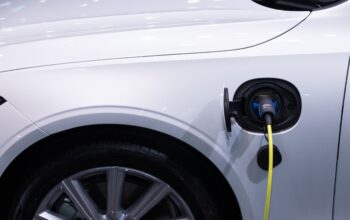The integration of smart grid technology and electric vehicles (EVs) has the potential to revolutionize the way we manage energy, offering benefits such as enhanced grid stability, reduced energy costs, and increased renewable energy integration. Smart grid technology, which utilizes advanced communication and control systems, combined with the flexibility of EVs, can lead to optimized energy management that benefits both consumers and the grid. In this article, we will explore the integration of smart grid technology and electric vehicles, highlighting the advantages, challenges, and opportunities that arise from this symbiotic relationship.
Smart Grid Technology Explained:
Smart grid technology involves the use of advanced sensors, communication networks, and data analytics to optimize the generation, distribution, and consumption of electricity. Unlike traditional grids, smart grids enable real-time monitoring and control of energy flows, allowing for more efficient and responsive grid management.
The Role of Electric Vehicles:
Electric vehicles are not only modes of transportation but also mobile energy storage units. The batteries in EVs can store significant amounts of energy and discharge it back to the grid when needed. This bidirectional flow of energy presents an opportunity for EVs to serve as valuable assets in grid management.
Benefits of Integration:
a. Grid Stability: Electric vehicles, when connected to the grid, can provide grid stability through vehicle-to-grid (V2G) technology. During peak demand periods, EVs can discharge stored energy to the grid, helping to meet electricity demand and prevent grid overloads.
b. Demand Response: The combination of smart grid technology and EVs enables demand response programs. Grid operators can communicate with EV owners to adjust charging or discharge patterns, effectively managing peak demand and avoiding electricity shortages.
c. Load Balancing: By coordinating EV charging and discharging schedules, smart grid technology can balance energy loads across the grid. This reduces the strain on distribution infrastructure during peak hours, preventing bottlenecks and grid failures.
d. Renewable Energy Integration: Smart grid technology can prioritize charging EVs when renewable energy sources, such as solar or wind, are generating surplus energy. This optimizes the utilization of clean energy and reduces reliance on fossil fuels.
e. Cost Savings: Through dynamic pricing and time-of-use rates, EV owners can benefit from lower electricity costs by charging during off-peak hours when rates are lower. This encourages the efficient use of energy and helps users save money.
f. Grid Resilience: The decentralized nature of smart grid technology combined with EVs’ energy storage capacity enhances grid resilience. In case of power outages or emergencies, EVs can supply backup power to critical facilities or homes.
Challenges and Considerations:
a. Infrastructure: The successful integration of EVs into the smart grid requires a robust charging infrastructure. Widely accessible charging stations are essential to encourage EV adoption and support bidirectional energy flows.
b. Battery Degradation: Frequent charging and discharging of EV batteries for grid services can lead to battery degradation over time. Implementing smart charging algorithms that prioritize battery health is crucial.
c. Communication Protocols: Effective communication protocols between EVs and the grid are necessary for efficient energy management. Standardized communication platforms ensure interoperability and enable seamless integration.
d. User Engagement: EV owners need to be educated about the benefits of smart charging and V2G services. User-friendly interfaces and incentives can encourage active participation in grid management initiatives.
Opportunities and Future Trends:
a. Decentralized Energy Management: The integration of EVs and smart grid technology supports decentralized energy management. Consumers become active participants in grid management, helping to balance supply and demand in real time.
b. Energy Trading: Peer-to-peer energy trading platforms could emerge, allowing EV owners to sell excess stored energy to other users or the grid, further democratizing energy distribution.
c. Vehicle-to-Home (V2H) Systems: Beyond V2G, V2H technology enables EVs to supply power to homes during outages or when electricity prices are high, creating a more self-sufficient and resilient energy ecosystem.
d. Vehicle-to-Building (V2B) Integration: Commercial and industrial buildings can benefit from V2B systems, utilizing EVs as energy storage units to support building energy management and reduce peak demand charges.
The integration of smart grid technology and electric vehicles marks a pivotal shift in energy management and transportation. This synergy offers a range of benefits, from enhanced grid stability and renewable energy integration to cost savings for consumers and increased grid resilience. However, addressing challenges such as infrastructure, battery degradation, and user engagement is essential for the successful implementation of this transformative paradigm.
As the world transitions towards a more sustainable and decentralized energy future, the integration of smart grid technology and electric vehicles holds immense promise. It empowers consumers, reduces carbon emissions, and contributes to the efficient and intelligent management of energy resources. With the evolution of technology and collaborative efforts between stakeholders, the integration of smart grids and EVs will continue to shape a more sustainable and resilient energy landscape, fostering a cleaner and more efficient energy ecosystem for generations to come.
